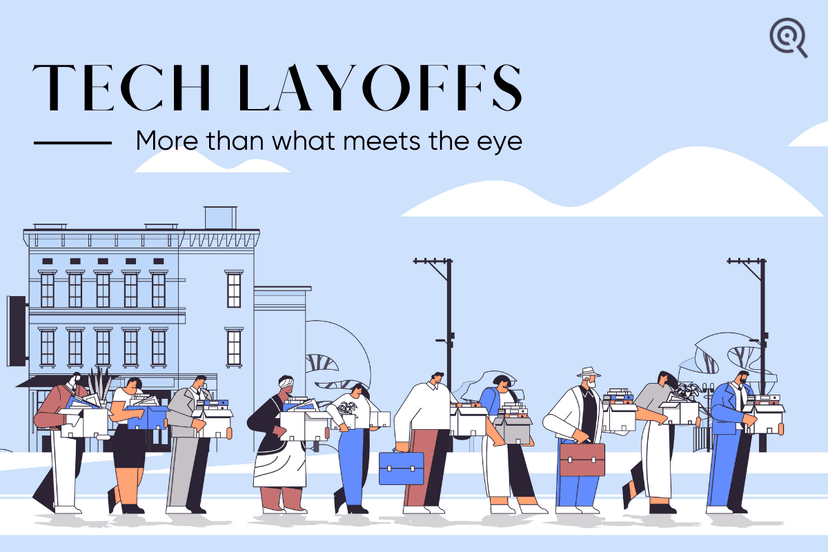Featured Articles
Subscribe to Our Newsletter
Receive exclusive updates and insights directly in your inbox.
Receive exclusive updates and insights directly in your inbox.

<p>On a fine day in 2016, the then RBI Governor, Dr Raghuram G. Rajan, decided to work on a pilot program, which went on to be launched in Mumbai on the 11th of April, 2016. The Reserve Bank of India established a branch named the National Payments Corporation of India; this body developed what is now popularly known as the UPI (Unified Payments Interface). With a simple vision to achieve “ease of funds transfer,” the committee behind the launch of UPI hardly thought that within 7 years the concept would explode to redefine the Indian payments scenario altogether and also capture other countries' interest in adopting this winner. A simple initiative cracked open a sea of opportunities. <img class="aligncenter wp-image-142100 size-full" src="https://admin.purplequarter.com/storage/posts/67fdd67618fdd-UPI-Blog-Design-02-scaled.jpg" alt="upi india trajectory" width="2560" height="1706"> On one hand, while the Western world has long been consumed by the use of debit and credit cards, the Indian economy is bustling with the ease of UPI. During the pandemic, when the world was living among insecurities, physical money became a weak link in daily operations. UPI came to the rescue and accelerated the wide acceptance of online payments during this phase of the pandemic. UPI reinvented the way Indians transfer money, pay bills, and conduct transactions. Gone are the days when the Kirana store next door handed out candies for every penny in change. With UPI, consumers can make as little as an Rs. 5 transfer where needed. From street hawkers to small shops/ restaurants to luxury stores, QR codes are everywhere. It has rightly become the backbone of India's digital payment infrastructure, making transactions faster, cheaper, and more secure than ever before. Before UPI, India's payment landscape was dominated by cash and traditional banking channels such as NEFT, RTGS, and IMPS. These methods were slow, expensive, and required cumbersome processes that often deterred people from making digital transactions. UPI changed all that by simplifying the payment process and creating a unified platform that allowed users to transact seamlessly across different banks and payment apps. In addition to simplifying life for people in major cities, UPI has had a profound effect on the daily routines of millions more in smaller, "tier 1" and "tier 2" cities. <img class="aligncenter wp-image-142101 size-full" src="https://admin.purplequarter.com/storage/posts/67fdd6793c8a7-UPI-Blog-Design-03-scaled.jpg" alt="advantages of UPI" width="2560" height="1706"> <b>A revolutionary move</b> UPI has been referred to as a revolutionary product in the payment ecosystem. It has emerged as one of the most popular tools in the country for carrying out digital transactions. Using UPI, multiple bank accounts can be accessed from a single mobile app, allowing seamless fund routing, merchant payments, and multiple banking features to be combined into one application. To further strengthen and popularise the interface, Prime Minister Narendra Modi launched the BHIM-UPI App during the inauguration of the ‘DigiDhan Mela’ on December 31, 2016. The app has connected with the common man where other applications such as GPay, PhonePe, Paytm etc… couldn’t venture. As an integrated app - BHIM catered to all consumers at once. As a result of UPI, digital payments have become a habit, and India is well on its way toward a cashless economy. March 2023 recorded a robust 8,685.30 million transactions for a total value of nearly Rs. 14.10 lakh crores. <b>UPI dominating the Payments share of FinTech </b> The payments segment of the Indian FinTech industry enjoys a rather large share of the pie, and UPI is unarguably dominating. Given the trends, a recent report by PhonePe and Boston Consulting Group concluded that India's digital payments market will more than triple from $3 trillion to $10 trillion by 2026. Despite being a predominantly cash-based economy, India now leads the world in real-time digital payments, accounting for almost 40% of all transactions. <blockquote>3 in every 4 digital financial transactions in India are now UPI-based</blockquote><p> Today, there is no doubt that the digital payment landscape in India has been transformed. Complementing the efforts of the Government, the people of India have also displayed a great affinity for embracing new technologies. Some developed nations are having difficulties transferring money to citizens' accounts due to inadequate digital infrastructure, but India has emerged as a leader in creating digital assets, which can serve as an example for others. <img class="aligncenter wp-image-142102 size-full" src="https://admin.purplequarter.com/storage/posts/67fdd67c1b821-UPI-Blog-Design-04-scaled.jpg" alt="UPI vs other means of payment " width="2560" height="1706"> <b>UPI accepted as payments overseas</b> On February 21, 2023, to faster remittances between India and Singapore, India's retail payment system, UPI, and its equivalent network in Singapore, called PayNow were integrated. This collaboration allows users from both countries to access faster and more cost-efficient cross-border money transfers. UPI-PayNow integration allows users of the two quick payment systems in either nation to send money across borders quickly, securely, and affordably via their respective mobile apps. This action has not only improved the social and economic ties between the two countries but has also brought international attention to India's payment system. This increased interest has spread to numerous nations worldwide, which have expressed an interest in trying out UPI for its ease of transactions. Other countries, such as Europe, Nepal, Bhutan, France & UAE have partnered or made provisions to accept UPI along with RuPay payments. <b>Looking ahead</b> After being a successful case study within 7 years of launch, UPI is taking the next big step with UPI Lite (on-demand payment wallets for lower transactional values), UPI123 Pay (ease of transactions for those who use feature phones), and UPI 2.0 (ease of recurring e-mandate payments). One of the most promising additions is that of UPI-Credit Card linking, which will allow credit card expansion among the masses through digital platforms. India's financial landscape has come a long way in a decade, making transactions faster, cheaper, more secure, and more accessible than ever before. The impact of UPI has been far-reaching, promoting financial inclusion, entrepreneurship, innovation, and the transition towards a cashless economy. </p><h3><strong>Authored by Richa</strong></h3><p> For more information, please reach out to the <a href="mailto:ma*******@pu***********.com">Marketing Team.</a></p></p>
Read More
<p><p>The HealthTech industry has always been a trailblazer in bringing visionary ideas to the forefront, leading the charge with monumental contributions to humanity's welfare. The intersection of healthcare and technology has been experiencing exponential growth. One of the most promising innovations emerging in recent years is the revolutionary use of Augmented Reality (AR) and Virtual Reality (VR) technologies in the healthcare industry.<p>AR allows users to experience a computer-generated environment overlaid with the real world, while VR creates a simulated world. Although most commonly associated with gaming, AR and VR have numerous applications in healthcare, from training healthcare professionals to improving patient outcomes. </p><p> </p><p><b>Shaping the Future of Healthcare</b></p><p>The healthcare industry is often grappling with a host of new challenges, including skyrocketing costs, the need for more individualized patient experiences, and the pressing need to deliver care to remote and underserved populations. These issues require innovative solutions and forward-thinking strategies to ensure that everyone has access to the care they need, regardless of their location or financial means.</p><p>The COVID-19 pandemic has been an unprecedented event that has upended lives and businesses worldwide, with far-reaching consequences for the foreseeable future. In this new reality, people have had to adapt to new ways of living, working, and interacting with each other, all while striving to maintain a sense of normalcy amidst the chaos. Thanks to digitalisation and advancements in technology, medical training and other vital components of healthcare have been able to shift to a virtual format, a capability that would have been unimaginable just a decade ago. </p><p>Reports predict that the implementation of AR and VR in healthcare will surge from $5.1 billion to $6.5 billion by 2025, with a CAGR of 30.7%. This rapid adoption of these cutting-edge technologies will accelerate the digitization of healthcare and usher in a new era of possibilities for payers, healthcare professionals and providers, and medical device manufacturers. They have created a new paradigm in patient care, improved medical training, and streamlined healthcare operations. </p><p> </p><p><b>Practical Uses in the Medical Field</b></p><p>From surgical simulation to high-resolution imaging, VR and AR are revolutionizing the way doctors and healthcare professionals approach patient care. It is helping patients cope with phobias and stress disorders, as well as providing a much-needed distraction during therapy sessions like chemotherapy. Moreover, VR is proving to be invaluable in lifestyle management, patient rehabilitation, and medical equipment maintenance, ensuring compliance with regulatory standards. For hospitals, minimizing the downtime of critical apparatus is crucial for smooth operations, and VR can help prevent cost-consuming delays and customer dissatisfaction.</p><p><!-- /wp:paragraph --><img class="aligncenter size-full wp-image-141895" src="https://admin.purplequarter.com/storage/posts/67fdd68257ca0-The-Future-is-Here-AR-and-VR-in-Healthcare-1.png" alt="Image" width="1200" height="900"><br><!-- wp:paragraph --><!-- /wp:paragraph --><br><!-- wp:heading {"level":3} --><b>Medical Training</b></p><p>AR can be used to train healthcare professionals in a safe and controlled environment. For instance, medical students can use AR to practice surgeries on virtual patients, allowing them to develop their skills before they operate on real patients. The applications can be used to teach biosafety training applications for medical students. A VR environment system for teaching safe behaviours and highlighting the serious role of hand hygiene among healthcare providers and training for emergency conditions (e.g., influenza pandemic, bio-terrorism) with various scenarios. </p><p> </p><p><b>Surgery Assistance:</b><b><br></b>AR and VR can help surgeons perform surgeries with greater precision. In oral and maxillofacial surgery (OMS), precise image registration and low processing time are crucial. However, current systems face challenges with image registration when matching different posture images, but advancements in AR are making visualisation more convenient in such sensitive surgeries. AR and VR have found significant applications in surgery, including nephrectomy, neurosurgery, orthopaedics, and laparoscopic surgery. These fields require reliability, realism, and accuracy to ensure user comfort and prevent inappropriate handling. AR offers benefits such as low cost, ethical safety, and patient safety during training. Some applications, such as AccuVein, can help find veins more accurately with the power of AR.</p><p> </p><p><b>Virtual Medical Consultations</b></p><p>AR-based 3D visualizations and simulations can help doctors explain complex medical concepts to their patients with greater clarity. Patients can use AR apps to visualize their medical conditions and receive advice from their physicians. This technology can make healthcare more accessible and convenient, especially for patients who live in remote areas. </p><p> </p><p><b>Enhancing Patient Experiences</b></p><p>AR can be used to create interactive and engaging experiences for patients. For example, children undergoing medical procedures can use AR apps to distract them from discomfort or pain. Additionally, patients can use AR to visualize how certain treatments will affect their bodies, helping them make informed decisions about their care.</p><p> </p><p><b>Medical Research and Emergency Management</b></p><p>AR can help researchers visualize complex data and models, leading to a better understanding of medical conditions and diseases. This technology can also help researchers test and refine medical devices and treatments, resulting in more effective outcomes for patients. For example, Microsoft's HoloLens Headset enables users to view dynamic holographic models of the human body, including muscles and veins. </p><p>AR and VR could be used to improve preparedness against pandemics by simulating various aspects of human behaviour and disaster consequences and experiences. For example, they could be used to educate and train healthcare providers to manage and respond to pandemic situations, to study the behaviour of healthcare providers in a controlled virtual environment, and to enhance the geographic information visualization and communication of the social network. </p><p> </p><p><b>Rehabilitation, Physical Therapy and Mental Health Therapy</b></p><p>AR can be used to create immersive environments for patients undergoing rehabilitation or physical therapy. Patients can use AR apps to visualize and interact with virtual objects, providing a fun and engaging way to perform exercises and track progress.</p><p>By implementing a specific mechanism of exposure therapy, patients diagnosed with phobias can confront their fears with the help of AR technology. This approach offers an improvement over traditional exposure therapy as providers have complete control over the stimuli presented to the patient. </p><p> </p><p><b>Medical Equipment Maintenance</b></p><p>AR can be used to train technicians to maintain and repair medical equipment, reducing downtime and increasing efficiency in healthcare facilities. AR technology can guide technicians through maintenance procedures, providing a more visual and intuitive approach to equipment maintenance.</p><p> </p><p>With these emerging technologies, healthcare providers can deliver a new level of patient care that is personalized, immersive, and intuitive. Patients will be able to visualize their medical conditions and receive expert advice from their physicians. AR and VR are also on the path to redefining medical training. As technological advancements continue, we anticipate more innovative uses shortly that will revolutionize the way we think of healthcare.</p><h3><strong>Authored by Shloka. N</strong></h3><p><!-- /wp:heading --></p><p><!-- wp:paragraph -->For more information, please reach out to the <a href="mailto:marketing@purplequarter.com">Marketing Team.</a></p><p><!-- wp:paragraph --><!-- /wp:paragraph --> </p></p><!-- /wp:paragraph --></p>
Read More
<p><p>The e-commerce trajectory in India has been evolving rapidly. Online retailing has dethroned a large chunk of in-store shopping. The pandemic was a challenging time for businesses everywhere, but those who were agile and able to adapt to the new normal thrived. This was especially true in the world of e-commerce, where companies had to reform incentives, divert resources towards technology, and incorporate innovative solutions. In the highly competitive market, brands that are building their opportunities and services are coming to the fore. With multiple factors at play, Tier 2 and 3 cities are now forging a rather large corner for themselves in the e-commerce market.<h4>Making Inroads in the Rural Market</h4><p>The shift in e-commerce sales is driven by various factors, such as increased Internet penetration, changing consumer behaviour, and the growth of local marketplaces. According to recent reports, the festive season of 2022 saw a surge in sales from Tier 2 and Tier 3 cities, with online retailers reporting impressive numbers. This trend is not just limited to the festive season, as e-commerce growth in these smaller cities has outpaced that of Tier 1 cities. It is now evident that the e-commerce industry in India goes beyond the urban population, and has made its way into the hearts of the hinterlands.</p><p>According to Flipkart, 60% of their consumers are from Tier 3 cities, and the company is undertaking campaigns to further target consumers from Tier 2 and Tier 3 cities. </p><p>Meesho's platform currently has approximately 8 lakh sellers, with 41% of them hailing from Tier-2 regions such as Hisar, Panipat, Tiruppur, etc. and 24% of the sellers being from Tier-4 regions.</p><p>According to the report by Unicommerce, in 2022, Tier 3 markets experienced an explosive growth rate of 64.7% in order volumes compared to the previous year, while Tier 2 markets also achieved an impressive 50.9% growth during the same period. Meanwhile, Tier 1 cities only saw a modest 10.3% increase in orders in 2022 compared to 2021. This highlights the remarkable potential for e-commerce growth in India's smaller cities and towns, which together accounted for nearly 63% of all orders placed by users.</p><p>What's remarkable is that Tier 2 and Tier 3 markets showed a faster growth pace compared to Tier 1 cities, indicating a shift in the country’s e-commerce demand. This trend is further fuelled by the rising adoption of omnichannel strategies among retail brands. 2022 witnessed a surge in the number of brands leveraging their offline stores to fulfil online orders, resulting in a staggering 55.6% increase in ship-from-store order volumes. This innovative approach to retailing is allowing existing brands to expand their reach and new brands to establish themselves in India's burgeoning e-commerce landscape. </p><h4>Internet Penetration is Driving E-commerce Growth</h4><p>There has been a remarkable growth in the number of Internet users in India. The introduction of digital payment options like UPI and the reduction of data prices have played a critical role in making e-commerce more accessible to consumers in rural areas. The increased availability of the Internet, and the rising number of smartphones, have created ample opportunities for smaller towns. The decline in data prices triggered by Reliance Jio and the success of the Digital India project has brought the convenience of e-commerce platforms to India’s hinterlands.</p><p>Moreover, social media marketing, content marketing, and influencer campaigns have definitively come into play. With more Indians across big and small towns using social media, brands can showcase their products to consumers directly. Brands are also collaborating with regional influencers to mark their presence, which contributes to a larger user base. The campaigns are also rolled out in regional languages. </p><h4><strong><img class="aligncenter size-full wp-image-141065" src="https://admin.purplequarter.com/storage/posts/67fdd694c1d66-ecomm-infographic.png" alt="Notable E-xommerce Players in Tier 2 and 3 Cities" width="1080" height="1080"></strong>Strengthening Logistics</h4><p><!-- /wp:paragraph --><br><!-- wp:paragraph -->Logistic centres have come a long way, reaching the ends and corners. Apart from existing third-party logistics services such as Delhivery, Xpressbees, ShadowFax, etc., companies are partnering with local delivery centres and national delivery players for effective regional reach. A strong groundwork based on a technology-led approach has had a direct impact on logistics, ensuring smoother and more timely deliveries. To enhance their operations, companies are investing in technologies such as demand forecasting, product recommendations, and predictive pin code identification to increase their capacity. Flipkart, for instance, has claimed to reduce its supply chain costs and generate profits from products with lower average selling prices. The company has achieved this by focusing on supply chain management, which has led to a reduction in shipping costs, making them cheaper than China. Companies are always looking to increase efficiency and decrease the cost of logistics. They are also leveraging the impact of personalization and constantly updating their app/website interface to show more personalised options to their customers. To strengthen their user base, companies are also adding vernacular languages to their websites.</p><h4>Consumer Behaviour is Changing</h4><p><!-- /wp:paragraph --><br><!-- wp:paragraph -->People are now more comfortable with online shopping and are willing to trust e-commerce platforms to deliver products to their doorstep. This evolving consumer behaviour is another key factor driving the shift to smaller cities. The pandemic made online purchasing familiar to most consumers. Sellers are also more willing to sell their products online. To support small businesses in transitioning online, e-commerce unicorn Meesho introduced pioneering initiatives like Zero Commission, Zero Penalty, and 7-Day Payments. With the rise of local marketplaces, people living in smaller towns and cities have access to a wide range of products. This has created new opportunities for small businesses and entrepreneurs to reach out to a larger customer base. Doorstep deliveries, free returns, customization, and loyalty programs are among the many perks that have made consumers habituated to interacting with brands from the comfort of their homes.</p><h4>The Rise of Women Entrepreneurs</h4><p><!-- /wp:paragraph --><br><!-- wp:paragraph -->E-commerce growth has also led to the empowerment of many women sellers in Tier 2 and Tier 3 cities who until then had limited avenues to scale. These women entrepreneurs can now access a larger market through e-commerce platforms, which has enabled them to expand their small businesses and contribute to economic growth. The scope of personalization makes e-commerce very attractive to consumers, and companies like Meesho, Flipkart, and Amazon are experimenting with new products and services to cater to the needs of consumers in these smaller cities.</p><p><!-- /wp:paragraph --><br><!-- wp:paragraph -->With changing consumer behaviour, increased Internet penetration, digital habits, and robust regional logistic operations, Indian e-commerce players are in a great position, and their reach beyond metropolitan areas is telling. The sector's continued growth benefits small businesses regionally, along with making smaller towns and cities accessible to a wider range of products and services. While more investments in infrastructure are needed to make e-commerce platforms’ operations seamless, there is immense untapped potential in the country’s hinterlands when it comes to the sector.</p><p> </p><p> </p><h3><strong>Authored by Shloka. N</strong></h3><p><!-- /wp:heading --></p><p>For more information, please reach out to the <a href="mailto:marketing@purplequarter.com">Marketing Team.</a></p><p><!-- /wp:paragraph --><br><!-- wp:paragraph --><!-- /wp:paragraph --> </p></p><!-- wp:paragraph --><!-- /wp:paragraph --><!-- wp:paragraph --><!-- /wp:paragraph --><!-- wp:heading {"level":3} --><!-- wp:paragraph --></p>
Read More
<p>Post-pandemic the world looks much different than what we anticipated. With climate change, changes in consumer behaviours and attitudes, and the most recent impacts of layoffs across the globe, companies have been letting go of their employees to great lengths. The tech sector in particular has been an active participant. According to <i>layoff.fyi, a</i> “job-cuts” site, about 101 companies had laid off 25,436 employees in the first few weeks of January 2023, globally. The data averages about 1,600 tech employees being let go per day across the world. In 2022, around 1,024 tech companies, including large corporations and startups, laid off 154,336 employees, making it the worst year in a decade. Indian startups like Sharchat, Rebel Foods, Captain Fresh, Dunzo, BharatAgri, Ola, DeHaat, Coin DCX, LEAD School and Bounce among others have laid off several hundred employees. As part of its global retrenchment drive, Amazon has laid off around 1,000 Indian workers. As a result of uncertain economic conditions, the company announced that it will cut around 18,000 jobs worldwide in January this year along with the recent round of 9,000 layoffs. Tech giants and startups have together laid off over 17,000 employees in 2022 in India alone. On a global scale too, organizations like Twitter for instance, in a frenzy decided to lay off 50% of their workforce. A majority of these companies are unicorns, late-stage firms or early-stage startups. The worst affected industries are edtech, fintech, hyperlocal delivery, insure tech, logistics, gaming and e-commerce. <img class="aligncenter wp-image-140745 size-full" src="https://admin.purplequarter.com/storage/posts/67fdd699c60a7-2.png" alt="Tech layoffs 2022-23" width="1200" height="800"> <h4><b>What caused these layoffs?</b></h4><p> While the effects of such layoffs are massive, companies are forced to give a rationale behind this huge wave of “letting go." To understand this, let’s step back and look at what happened at the start of 2020; from then on, it's really a domino effect. When the pandemic hit, tech companies were working at full capacity, which meant job security, higher pay, scheduled promotions, internal hiring, WFH options, and much more. Covid-19 changed the way we perceived things and altered our priorities and patterns. By staying indoors, our interactions with the world were limited, which further led to lower spending and high savings. The economy began to function the same way; everything shifted online, from meetings to studies, festivities to weddings. Post the lockdown, however, the primal urge to socialize kicked in, which further led to those novel concepts of Covid (such as online classes, zoom calls, virtual concerts, etc) taking a backseat. These unavoidable changes slowly and eventually made their way to the corporate world. Probably the most important part of the layoff scenario is that organizations, big or small, did not shy away from accepting that they may have jumped the hiring wagon. Hurrying hiring decisions and being bullish about the market and business following Covid19 contributed to the excess hiring that has resulted in layoffs. Most of the CEOs, while acknowledging the mass layoffs, have made a uniform acknowledgement; that they may have been a little too buoyant on the post-pandemic digitisation tide. Now, these layoffs have left a bitter taste, and the base of these companies has quavered. Organizations will have to do the right thing to regain the confidence of potential future employees. With the layoffs' effect, companies have tried to go for a lean organisational structure by cutting off excess costs. <img class="aligncenter wp-image-140747 size-full" src="https://admin.purplequarter.com/storage/posts/67fdd69c5c047-3.png" alt="Industry wise layoffs" width="1200" height="800"> </p><h4><b>Is the layoff in reality a trade-off?</b></h4><p> Looking at the scenario through a slightly tweaked lens, it isn't that these companies do not have the monetary resources, especially organizations such as Microsoft and Google. It is fascinating that while Microsoft has reported laying off around 10,000 employees, it has simultaneously announced an investment of $10 billion in Open.ai. Similarly, Alphabet, Google’s parent company, laid off 12,000 employees globally. At the same time, Google is investing huge amounts of money into its operations and R&D for Bard AI. In recent news, Google did not restrict itself to humans; its subsidiary, “Everyday Robots” fired the robots that on the sidelines cleaned and maintained the Google offices. Another giant, Meta removed 11,000 employees in late 2022 with an additional 10,000 job cuts in March. Humans and robots are now working together in a way that we could never have imagined, and thus companies are making conscious decisions based on that fact. Understanding that layoffs not only impact the employee but also have a ripple effect on the family, society, nation, and world at large is crucial. </p><h4><b>2008 financial history repeats itself</b></h4><p> In merely 11 days, the financial stability of the world’s strongest economy was shaken to its roots, fearing a repeat of the 2008 financial crisis. Silvergate, Silicon Valley Bank, Signature Bank & Credit Suisse have witnessed a financial downfall, with hundreds of thousands of customers left helpless amidst a falling financial ecosystem. This series of events has led individuals and companies worldwide to be cautious in their decisions and overall strategies. Not only has it affected corporates, their finances, and business decisions, but also individuals with personal finances are considering parking their money away from financial institutions. Money is being withdrawn from the markets, which has led to the markets crashing and observers being bearish about it. Experts believe that this downfall will have a ripple effect on economies worldwide due to their direct/ indirect dependence on the US. </p><h4><b>Looking ahead</b></h4><p> In the face of current headwinds, the great resignation seems a thing of the distant past now, but the future may be another Pandora’s box. Going forward, we will see companies being extremely cautious with their hiring decisions. They will, of course, seek to be profitable, but mostly without compromising on humane ethics. Irrespective of the reasons, the demand for necessary talent is ceaseless, if not increasing. Although organizations have gone through multiple obstacles like the pandemic, silent quitting, and great resignation, the hiring space is not shrinking. As new technologies take precedence, the demand for the necessary talent pool will only bolster. </p><h3><strong>Authored by Richa</strong></h3><p> For more information, please reach out to the <a title="This contact has been encoded by CleanTalk. Click to decode. To finish the decoding make sure that JavaScript is enabled in your browser." href="mailto:ma*******@pu***********.com" data-original-string="kaI6eq8rq398qgTZYy7BpgMCi4Ug5NeuXxEIQwTPOH4=">Marketing Team.</a></p></p>
Read More
<i>2023 began with a bang as the ChatGPT disruption continued to evolve with promising outcomes for businesses and individuals alike. It came over as a fresh wave of exciting change bundled with endless discourses around it. Months down and now the initial euphoria conversations have taken a different turn, one of caution. <i>For anyone who is still unaware of the concept of ChatGPT, here is a simple breakdown; ChatGPT is an artificial intelligence model of Open.ai that scans data from the online world and gives the user a concise or long response (as requested) to the prompt (question) posed to it. Here is what ChatGPT has to say about itself:</i><img class="wp-image-126558 size-full aligncenter" src="https://admin.purplequarter.com/storage/posts/67fdd6b8bb842-Screenshot-2023-02-13-at-11.19.29-AM.png" alt="ChatGPT " width="1982" height="884"><i>Chatbots have been growing in popularity as a means of customer service and communication, but with the advent of large language models like ChatGPT, the capabilities of these chatbots have become truly remarkable. While these language models are designed to provide helpful and informative responses, they can also be a <a href="https://www.purplequarter.com/social-engineering-planned-cyber-attack-purple-quarter/all-about-tech/">potential risk to cybersecurity</a> if not properly secured.</i><h2><b><i>Pros and Cons of ChatGPT</i></b></h2><i>The cybersecurity market is and will be significantly impacted by ChatGPT, as with any new technology. This artificial intelligence can be used to develop advanced cybersecurity products. Many believe the broader use of AI and ML is essential in identifying potential threats. ChatGPT can play a vital role in noticing and reacting to cyberattacks. ChatGPT can also be used for bug bounty programs. However, it should be noted that, where there is technology, there are cyber risks.</i><i>ChatGPT and similar models can be used to enhance cybersecurity by providing secure and efficient communication channels between organizations and their clients. With their advanced language processing capabilities, they can effectively recognize and respond to potential security threats, thereby reducing the risk of cyberattacks. Additionally, ChatGPT can also be used to analyze large amounts of data to identify patterns and detect suspicious activity, making it a valuable tool in the fight against cybercrime.</i><h2><b><i>Malpractices with ChatGPT</i></b></h2><i>Many users have reported that despite the prompts, ChatGPT will not write malware code if asked. It has defined guardrails and security protocols to recognise inappropriate content requests. However, there have been a few instances whereby developers have tried various ways to bypass the protocols and succeeded in getting the desired output/ code. </i><i>The catch is that if a prompt is detailed enough to explain the steps of writing the malware instead of a direct prompt, ChatGPT will answer the prompt effectively, resulting in construction malware on demand.</i><img class="aligncenter wp-image-126603 size-full" src="https://admin.purplequarter.com/storage/posts/67fdd6bc2accf-Screenshot-2023-02-16-at-9.58.57-AM.png" alt="ChatGPT" width="2282" height="1156"><i>The use of AI programs, such as ChatGPT, may soon make it faster and easier for attackers to launch cyberattacks using AI-generated code since there are already criminal groups offering malware-as-a-service. ChatGPT has enabled even less experienced attackers to write more accurate malware code, which was previously only possible for experts.</i><i>The deployment of language models like ChatGPT also creates new vulnerabilities that must be addressed. As these models are fed massive amounts of data, they can become targets of malicious actors who wish to access sensitive information. Furthermore, the deployment of these models on public cloud platforms can create security risks if proper safeguards are not put in place. This is because the data that these models process and store can be vulnerable to theft or unauthorised access, putting organizations and their clients at high risk. </i><h2><b><i>Ripples from the Dark Web</i></b></h2><i>Nothing surpasses the dark web and the same applies to the underground crime forums that operate off the radar. According to a report from Israel security Company - Check Point, a hacker who previously shared Android malware exhibited a code written by ChatGPT that stole files of concern, compressed them and sent it across the web. The hackers also went on to show another tool that could further upload malware to an already infected PC. </i><i>Another unnamed user, in the same forum, shared a Python code that could encrypt files, saying OpenAI’s app helped build it. Check Point mentioned in its report that such codes are used for unharmful purposes at the moment but they can also be easily amended for malpractices. </i><h2><b><i>ChatGPT is not alone</i></b></h2><i>While we are contemplating the long-term effects of ChatGPT on the users and their security, Google recently introduced its AI-induced model - Bard AI. The search giant in its announcement stated that they’ve been on a journey with large language models. About two years ago they revealed their next-gen language & conversation capabilities powered by LaMDA. </i><i>Bard AI seeks to combine the depths of knowledge with creativity, intelligence and power of the language models. The online world is the powerhouse of data that backs the responses generated by Bard which is currently in a testing phase and available to limited groups. Bard's capability in curbing cybercrime is an interesting angle to explore in near future.</i><h2><b><i>Working around ChatGPT </i></b></h2><i>In conclusion, while ChatGPT and other large language models have the potential to enhance cybersecurity, they must also be treated with caution and secured properly. Organizations no more can be blind to the potential vulnerabilities that these models pose and prepare ahead and implement measures to mitigate these risks. This may include regular security audits and the deployment of encryption and the implementation of multi-factor authentication systems. By doing so, organizations ensure that they avert growing cybercrime threats. </i><h3><strong>Authored by Richa</strong></h3><p> For more information, please reach out to the <a href="Marketing@purplequarter.com">Marketing Team.</a></p></i>
Read More
<p>In the gaming industry, change is constant as gamers are always seeking newer ways to interact, personalize, and make choices. From Pinball and Solitaire to immersive computing, we are at the cusp of a major shift. Now we have AI, Cloud Gaming, Virtual Reality, and Augmented Reality tools upending technologies and the gaming experience altogether. <h4><b>AR and VR Revolutionising the Industry</b></h4><p> Today’s AR and VR technology is tailor-made for the gaming and business world. Augmented Reality and Virtual Reality tools provide an immersive customer experience with simulations of real or imagined environments using three-dimensional graphics and audio. Headsets like the Oculus Rift, HTC Vive, Oculus Go/Gear VR, PlayStation VR, and Google Daydream have become increasingly popular. <img class="aligncenter size-full wp-image-116278" src="https://admin.purplequarter.com/storage/posts/67fdd6a0dcef1-AR-VR-_-Blog-02-e1675274743488.jpg" alt="AR and VR Tech Giants and their Platforms" width="1200" height="800">Consumers are eager for more immersive virtual environments, which presents an opportunity for technology and media companies to retain players' engagement across various experiences such as live virtual events, e-sports, and socializing. These virtual environments are not only immersive but overlap with the physical world, and are also persistent. When a player logs off, they continue to exist. This enables personalization and customization, which allows the user to thrive in a fantasy locale. They also allow anonymity, hence having characteristics that make them well-suited to become a platform for new experiences. According to reports, the global market for AR & VR technologies is expected to reach a size of $137 billion by 2027, growing at a CAGR of 25.3% during the forecast period of 2022-27. Since 2019, over $240 billion has been invested in the industry from VCs, PEs, and M&A, primarily from technology and media giants as well as traditional gaming companies. The M&A activity alone has nearly doubled from 2021 to 2022 as competitors recognize the need for a global scale. This growth is fueled in part by teenage engagement, who spend more time on video games than any other form of media. For adults 18-34 years of age, it is the second most popular form of media after social media. Online and mobile gaming lead the expansion of the gaming industry, thanks to their widespread availability and the integration of Augmented and Virtual Reality technology, which adds to the heightened engagement, and immersive experience. Virtual and augmented reality technologies are now delivering experiences that live up to the hype and at more competitive prices. Today, more Meta Quest 2 headsets have been sold than Xbox Series X and S combined. <img class="aligncenter size-full wp-image-116277" src="https://admin.purplequarter.com/storage/posts/67fdd6a391073-AR-VR-_-Blog-03-e1675274770790.jpg" alt="Popular VR Games" width="1200" height="800">New development tools are enabling more developers to create realistic virtual worlds, leveling the competition. In the future, the key to success in virtual worlds will be in the design and gameplay, rather than just impressive graphics. The most successful virtual worlds will be those that are engaging, social, have innovative gameplay, and offer unique monetization models. CNET places games such as Beat Sabre, Cloudlands VR Minigolf, Moss, Firewall Zero Hour, etc... in the top categories for best VR games. </p><h4><b>Pioneering the Metaverse</b></h4><p> Virtual and augmented reality is <a href="https://www.purplequarter.com/metaverse-calling-a-deep-dive-into-business-opportunities-of-tomorrow/all-about-tech/">spearheading immersive technology in the metaverse</a>. Young gamers aged 13-17 are becoming increasingly accustomed to virtual worlds, with 53% of them expressing a preference for inheriting a vacation home in the metaverse over an exotic island. The report finds half of the younger gamers who don’t even currently play online games have expressed interest in the metaverse. Social interactions that occur in gaming spaces provide the basis for other online activities, including concerts, sports events, and even work and commerce. The increasing demand for community experiences is driving the growth of a more expansive metaverse. However, building large virtual-reality games is a challenging and costly endeavor, with development costs ranging from $80 million to $300 million and projected to reach $1 billion by 2027. To recoup these expenses, game developers need large player bases and must establish relationships and partnerships across markets to ensure access to distribution channels. The global video game market size is expected to reach $196.5 billion by 2025 and is expected to expand at a CAGR of 12.9%. With the introduction of new, cutting-edge equipment from manufacturers, the experience of VR and AR gaming is now beyond what was previously imaginable. Metaverse is now further intensifying the gaming world's integration with the physical world. As advancements in the front continue, it will be interesting to see what’s more in store for the industry. </p><h3><strong>Authored by Shloka. N</strong></h3><p> For more information, please reach out to the <a href="Marketing@purplequarter.com">Marketing Team.</a></p></p>
Read More